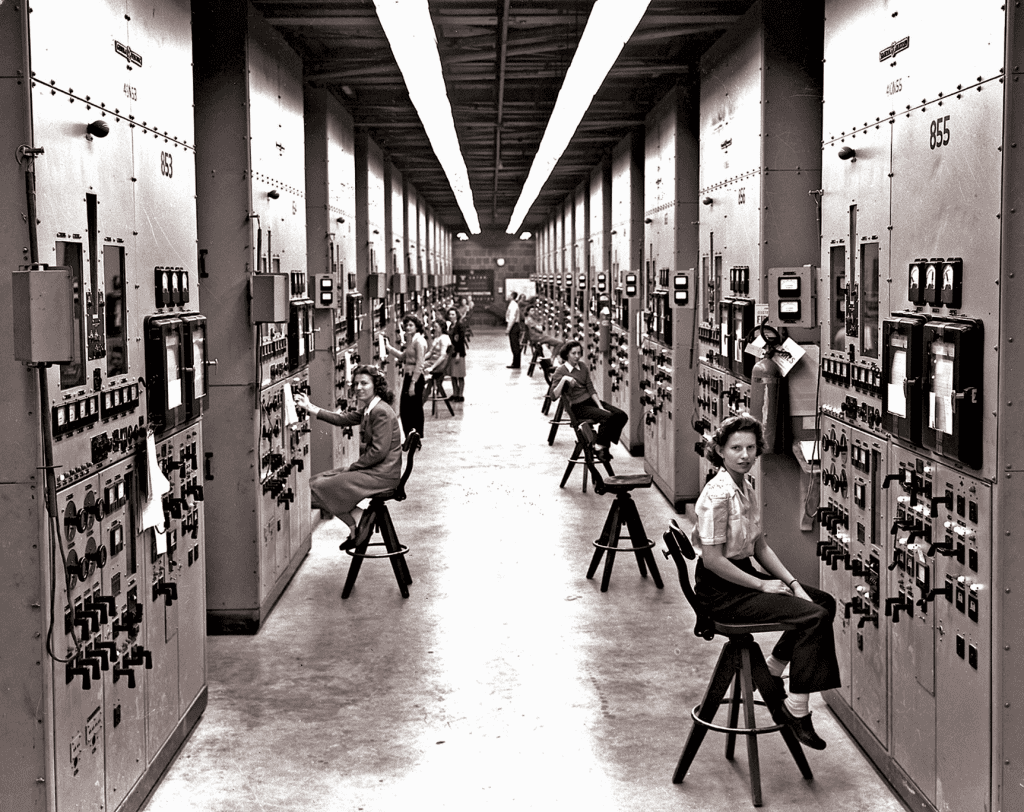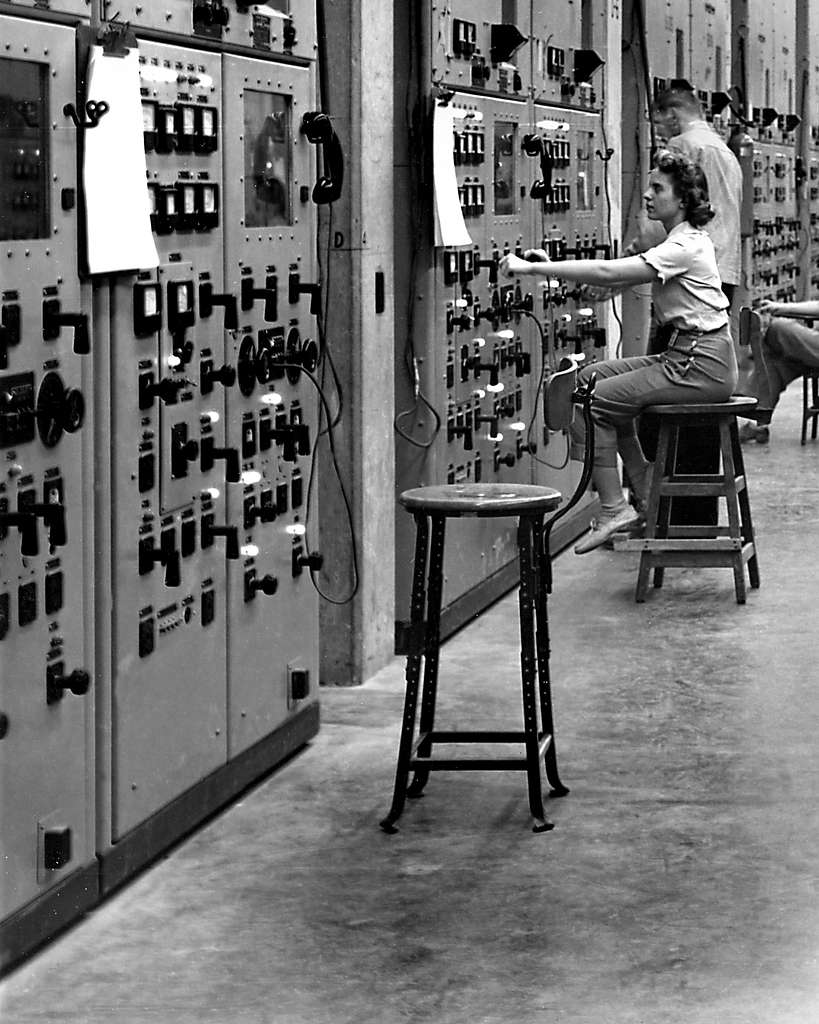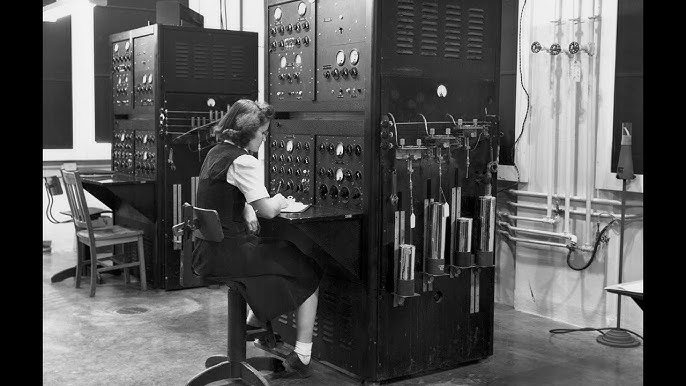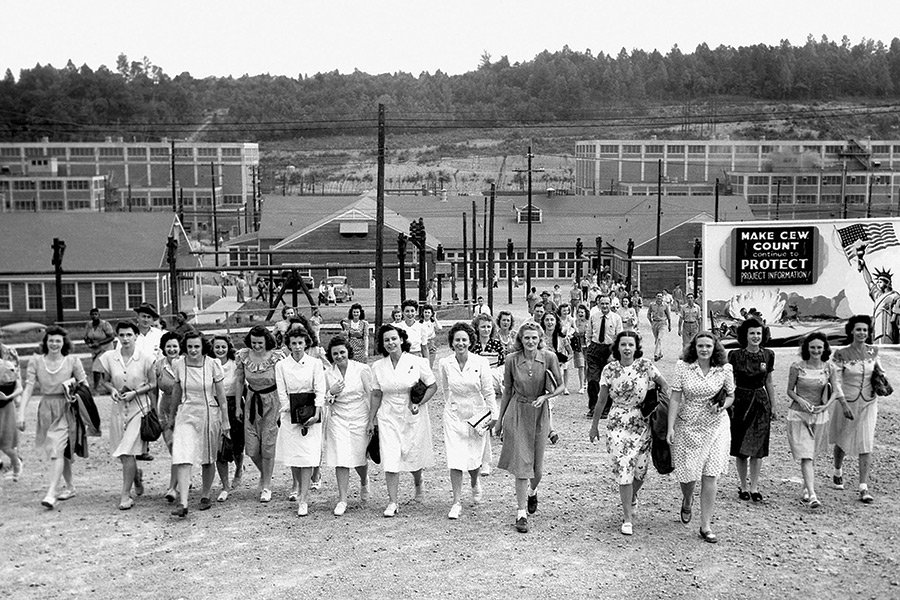During the early days of the atomic bomb’s development, the world was embroiled in the chaos of World War II. Amidst the global conflict, a group of women, known as the “Calutron Girls,” played a crucial yet largely unsung role in the creation of the first atomic bomb. These women worked at the Oak Ridge National Laboratory in Tennessee, contributing their expertise to one of the most important scientific and military efforts in history. Their efforts were not only groundbreaking but also performed in near-total secrecy, with many of them unaware of the true nature of their work until after the bomb had been dropped on Hiroshima.

The Calutron Girls: Who Were They?
In the midst of the Second World War, the U.S. government embarked on a top-secret mission known as the Manhattan Project. The goal was to develop an atomic weapon before the Axis powers could do so. One of the critical components of this project involved the production of uranium-235, a rare isotope essential for the bomb’s creation.

Oak Ridge, Tennessee, was chosen as the site for a vast secret facility where a complex process of uranium enrichment took place. This facility relied on the use of “calutrons,” a type of mass spectrometer designed to separate isotopes of uranium by using magnetic fields. The operation of these machines was crucial for the success of the Manhattan Project, and it was here that the Calutron Girls came into the picture.
By 1944, approximately 10,000 women were employed at Oak Ridge, many of them as “Calutron Girls.” These women were tasked with operating the calutron machines, which required a steady hand and a sharp eye. They manually adjusted the machines to ensure they operated at peak efficiency. Though they did not understand the full scope of their work, the women’s contributions were vital to the creation of the atomic bomb.
Video:
The Calutron Girls: From the Farm to the Lab
The Role of the Calutron Machines
The calutron machines used at Oak Ridge were complex and required careful handling. Each machine operated in a high-stress environment, and small adjustments could make the difference between success and failure. The Calutron Girls ensured the stability of the machines, allowing for the smooth operation of the separation process.
The machines themselves were large, delicate, and prone to malfunction. The Calutron Girls monitored and operated these machines, adjusting settings based on real-time readings to ensure that the machines remained stable during operation. This required not only technical skill but also remarkable patience and focus.
In addition to operating the machines, the Calutron Girls also performed routine maintenance, troubleshooting any issues that arose. Their attention to detail and dedication to the task were critical for the success of the uranium enrichment process, which ultimately produced the 140 pounds of uranium-235 necessary for the atomic bomb.

The Impact of Their Work
By August of 1945, the work of the Calutron Girls had paid off. The facility at Oak Ridge had successfully produced enough uranium-235 to fuel the atomic bomb. However, the women who worked on these machines were not immediately informed of the true nature of their work. It wasn’t until after the bomb was dropped on Hiroshima in August 1945 that they learned of the devastating power they had helped to create.
Video:
The Calutron Girls: The Women Who Helped Build the Bomb
For many of the women, this revelation came as a shock. They had spent years working on the calutrons, performing their jobs with dedication and professionalism, without ever being told that they were contributing to the creation of a weapon of mass destruction. The realization that their work had led to the destruction of an entire city left many of the Calutron Girls grappling with feelings of guilt and confusion.
Despite the emotional toll, the Calutron Girls played an indispensable role in the success of the Manhattan Project. Their efforts ensured that the necessary uranium-235 was produced efficiently and effectively, allowing the U.S. to create the atomic bomb and ultimately end the war. Their story is a testament to the countless women who contributed to wartime efforts, often without recognition or credit.
The Legacy of the Calutron Girls
Today, the contributions of the Calutron Girls are largely overlooked in the broader narrative of the Manhattan Project and the development of nuclear weapons. While their work was essential to the creation of the atomic bomb, their names have been lost to history, overshadowed by the larger figures involved in the project.
However, in recent years, efforts have been made to shine a light on the Calutron Girls and the vital role they played in shaping the course of history. Documentaries, books, and historical accounts have sought to honor their contributions and ensure that their work is not forgotten. The women of Oak Ridge were not just bystanders in the development of the atomic bomb they were active participants in a process that changed the world forever.

Conclusion: A Story of Courage, Sacrifice, and Innovation
The story of the Calutron Girls is a poignant reminder of the often-overlooked contributions of women during times of war. These women worked in grueling conditions, contributing to the development of one of the most powerful and destructive weapons in history. Their dedication, skill, and hard work helped bring about the end of World War II, even as they were kept in the dark about the true purpose of their efforts.
In the years since, their story has come to symbolize not just the importance of women in science and technology, but also the sacrifices that often go unnoticed in the pursuit of victory. The Calutron Girls’ contributions to the Manhattan Project remain a testament to their courage and determination, and their legacy continues to inspire future generations of women in STEM fields.


